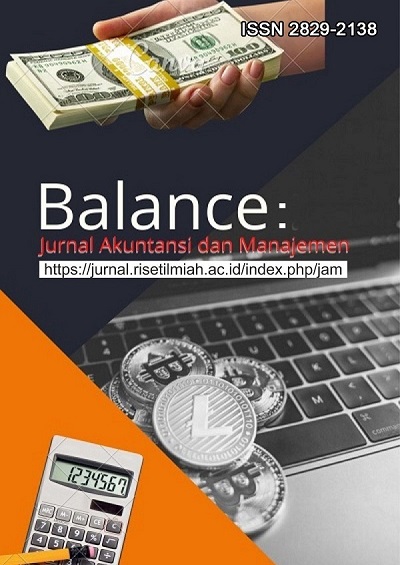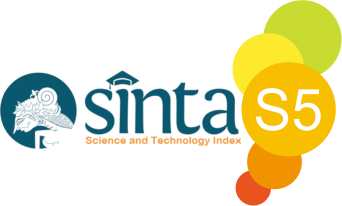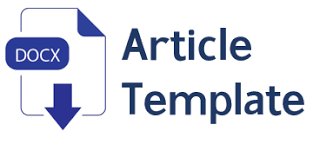Perbandingan Strategi Dollar-Cost Averaging Dan Lump Sum Investing Dalam Investasi Saham
DOI:
https://doi.org/10.59086/jam.v4i2.1065Keywords:
dollar cost averaging, lump sum investing, idx30, return, sharpe ratio, stock investmentAbstract
This study aims to compare the effectiveness of two stock investment strategies, namely Dollar-Cost Averaging (DCA) and Lump Sum Investing (LSI), on stocks included in the IDX30 index of the Indonesia Stock Exchange during the 2013–2024 period. The research employs a quantitative descriptive approach using 12 stocks that consistently remained in the IDX30 throughout the period. The analysis is conducted based on return, risk (standard deviation), and Sharpe ratio, with a difference test performed on returns. The findings indicate that, in general, LSI generates higher returns compared to DCA, particularly in bullish timing conditions. However, DCA demonstrates more stable performance with lower risk and a better Sharpe ratio in bearish timing conditions. This study implies that the choice of investment strategy should be adjusted according to timing conditions and the investor’s risk profile.
Downloads
References
Ahmad, K. (2004). Dasar - Dasar Manajemen Investasi dan Portofolio. Rineka Cipta.
Bodie, Z., Kane, A., & Marcus, A. J. (2013). Investments (10th ed.). McGraw Hill.
Bursa Efek Indonesia. (2021, April 5). Indeks Saham. PT Bursa Efek Indonesia (BEI). https://www.idx.co.id/id/produk/indeks
Damodaran, A. (2012). Investment Valuation: Tools and Techniques for Determining the Value of Any Asset, 3rd Edition (3rd ed.). Wiley Finance.
Elzafir Habsjah, T. M., & Permana, I. S. (2023). Comparison of Long-Term Investment Strategies: DCA vs Lump-Sum Investing in the S&P 500 Index. International Journal of Management Science and Application, 2(2). file:///D:/Ijmsa+Vol+2+No.2+Sep+2023+Indra%20(1).pdf
Eriksson, L., & Fransson, P. (2021). Dollar-Cost Averaging Versus Lump-Sum Investing-Evidence from Sweden.
Fama, E. F. (1970). Efficient Capital Markets: A Review of Theory and Empirical Work. American Finance Association, 25(2), 383–417.
Ghozali, I. (2016). Aplikasi Analisis Multivariete SPSS 23.
Graham, B. (2003). The intelligent investor: The definitive book on value investing. HarperBusiness Essentials.
Hadityo, F. S., Dewantara, M. G., & Rafi, M. L. (2021). Perbandingan Strategi Lump-sum dan Dollar Cost Averaging pada Momentum Tumbuhnya Emiten Sektor Teknologi Indonesia. Prosding Seminar Nasional Riset Pasar Modal.
Hartono, S. (2018). Strategi Dollar Cost Averaging Untuk Menarik Minat Masyarakat Berinvestasi Di Pasar Modal Dalam Rangka Peningkatan Penerimaan Pajak. Jurnal Info Artha, 2, 53–64.
Herlianto, D. (2008). Teori Portofolio Dan Analisis Investasi (Edisi 1). Wimaya Press UPN “Veteran” Yogyakarta.
Israelov, R., & Lo, S. (2023). Time In vs. Timing the Market: The Advantages of Lump-Sum Investing Over Dollar-Cost Averaging Executive Summary. The Journal.
Jiang, F., Lee, J., Martin, X., & Zhou, G. (2019). Manager sentiment and stock returns. Journal of Financial Economics, 132(1), 126–149. https://doi.org/10.1016/J.JFINECO.2018.10.001
Kirkby, J. L., Mitra, S., & Nguyen, D. (2020). An analysis of dollar cost averaging and market timing investment strategies. European Journal of Operational Research, 286(3), 1168–1186. https://doi.org/10.1016/J.EJOR.2020.04.055
Kongkaew, T., & Saengpao, C. (2024). Investment Strategies in Covid-19 Pandemic: Comparative Analysis of Stock Investment Performance in the SETTHSI Index and the SET100 Index Utilizing Dollar Cost Averaging (DCA), Lump Sum (LS), and Value Averaging (VA) Strategies. Journal of Business, Innovation and Sustainability.
Kustodian Sentral Efek Indonesia. (2024). Statistik Pasar Modal Indonesia. https://doi.org/10.311.152
Lu, R., Hoang, V. T., & Wong, W.-K. (2021). Do lump-sum investing strategies really outperform dollar-cost averaging strategies? Studies in Economics and Finance, 38(3), 675–691. https://doi.org/10.1108/SEF-04-2018-0107
Marhayu, P. G., & Santoso, B. (2024). Sistem Investasi Di Indonesia. TOMAN: Jurnal Topik Manajemen, 1(2), 303–318.
Markowitz, H. (1952). PORTFOLIO SELECTION. The Journal of Finance, 7(1), 77–91. https://doi.org/10.1111/j.1540-6261.1952.tb01525.x
Putri, K. A. (2023). Jumlah Investor Pasar Modal di Indonesia Masih Sedikit, BEI Ungkap Penyebabnya. Infobanknews.Com. https://infobanknews.com/jumlah-investor-pasar-modal-di-indonesia-masih-sedikit-bei-ungkap-penyebabnya/
Reyhan, I., Putra, N., & Moelyani, I. A. (n.d.). Analisis Metode Dollar Cost Averaging Sebagai Strategi Investasi Paling Efektif Untuk Investor Pemula.
Reyhan, I., Putra, N., & Moelyani, I. A. (2021). Analisis Metode Dollar Cost Averaging Sebagai Strategi Investasi Paling Efektif Untuk Investor Pemula. Prosiding Seminar Nasional Riset Pasar Modal 2021.
Sari, A. I., Yolanda, F., Ardelilla, S. R., & Waseso, W. J. (2019). Capital Market Efficiency Analysis on Idx30 Index in Indonesia Stock Exchange Analisis Efisiensi Pasar Modal Pada Indeks Idx30 di Bursa Efek Indonesia. In Research in Accounting Journal (Vol. 3, Issue 1). http://journal.yrpipku.com/index.php/raj|
Shaesardy Hadityo, F., Giffari Dewantara, M., & Luthfi Rafi, M. (2021). Perbandingan Strategi Lump-sum dan Dollar Cost Averaging pada Momentum Tumbuhnya Emiten Sektor Teknologi Indonesia. Prosding Seminar Nasional Riset Pasar Modal.
Smith, G., & Artigue, H. M. (2018). Another Look at Dollar Cost Averaging. The Journal of Investing, 27(2), 66–75. https://doi.org/10.3905/joi.2018.27.2.066
Sugiyono. (2013). Metode Penelitian Kuantitatif, Kualitatif Dan R &. D (29th ed.). ALFABETA, CV.
Suharti, E., Edawati, L., Zatira Dhea, & Setiawan, T. (2022). Manajemen Investasi Dan Teori Portofolio Penerbit Cv. Eureka Media Aksara (T. Endi & A. Negara, Eds.). Eureka Media Aksara.
Wahyudi, R. (2024). Mempelajari Efisiensi Pasar Modal Melalui Teori Portofolio.
Zein, M. M., & Darma, G. S. (2023). The Dollar Cost Averaging, Lump Sum, and Value Averaging Strategies in Mutual Fund Investments. Quantitative Economics and Management Studies, 4(6), 1123–1140. https://doi.org/10.35877/454ri.qems2068
Downloads
Published
How to Cite
Issue
Section
License
Copyright (c) 2025 Adika Paranata, Siti Aisyah Hidayati, Adrianda Anwar

This work is licensed under a Creative Commons Attribution 4.0 International License.
This is an open-access journal. All works are published under the Creative Commons license CC-BY which means that all content is freely available at no charge to the user or his/her Institution. Users are allowed to read, download, copy, write, improve, and create derivative creation even for other lawful purposes, this license permits anyone to, as long as they cite and license the derivative creation under similar terms

This work is licensed under a Creative Commons Attribution 4.0 International License.


















